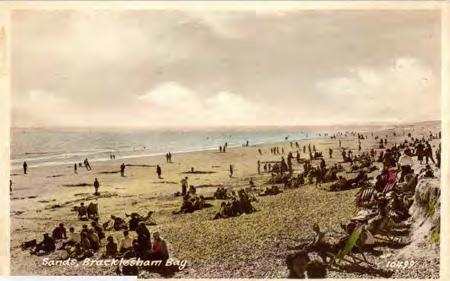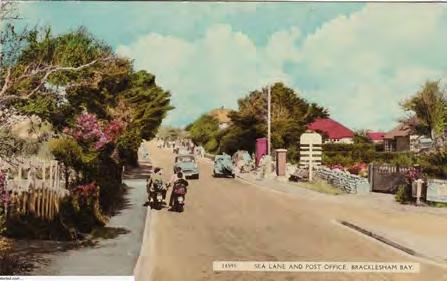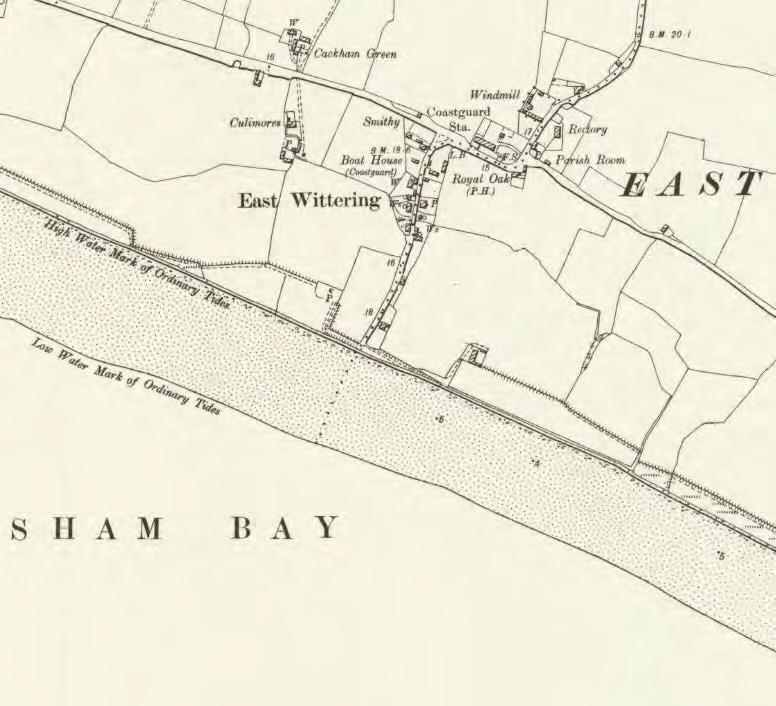
4 minute read
A Little History
from Bracklesham and East Wittering Vision - Potential Improvements for the village centres
by Brew_Vision
Bracklesham & East Wittering is a small parish of irregular outline residing on a windswept coastal plain approximately seven miles south west of Chichester, and derives its name “Wittering” from the settlement of the Wihthere’s People, and the prefix “East” to distinguish this parish from West Wittering. Bracklesham is derived from the personal name “Braccol”, plus the suffix “Ham” – meaning homestead of enclosure. Bracklesham was once a prebendal manor in its own right with its own ancient chapel. The chapel was annexed to East Wittering by Bishop Sherbourne in 1518. At the time of the compilation of the Domesday Survey, the manors of Sidlesham, Selsey and East Wittering were all held by the Bishop of Chichester, within the Hundred of Somerley. This later combined with the Hundred of Wittering (Birdham, Itchenor and West Wittering) to form the Hundred of Manhood. During the mid-nineteenth century, the population was around 200; by 1900 this had dropped by about 50, with a total of 41 houses in the parish. The interwar period saw a large amount of development on the coastal strip, with the emphasis being mainly on holiday traffic - a valuable local industry. This sustained period of suburbanisation contributed to an ever-changing village aesthetic as old, familiar landmarks and institutions were either replaced by new buildings or outright demolished owing to their decrepitness. The growth was also due to the cheap cost of land, and without any form of planning regulations numerous varieties of homes were built for use either as permanent residences or holiday homes. The major turning point was to be the development of holiday camps across the parishes in the 1930s, which marketed themselves to a less exclusive audience than the more expensive holiday home market attracted. New Beach Holiday Camp in neighbouring Earnley was a typical example of such, whose owner, Joe Lyndhurst, noted in his 1962 brochure that “It was only after the effects of the depression began to wear off that the real development began. The number of campers was nearly 200 during July and August of 1933 in a season that started in Easter”. The evacuation of Dunkirk and the Fall of France in the spring of 1940 prompted the realisation that the threat of bombing raids in the area were now real, and there was a renewed fear of invasion as many residents abandoned their seaside holiday homes to retreat to the sanctity of the inlands.
The end of the Phoney War also brought with it the coming of the military into the Witterings, with The Duke of Cornwall’s Light Infantry being the first to arrive in a desperate state following their withdrawal from Dunkirk. Many of the holiday camps in the area were requisitioned by the military, the most prominent of which was HMS Sea Serpent established at Gibson’s Holiday Camp; a base of Naval operations throughout the war. The villages played host to a number of British, Canadian and American regiments for the rest of the war, with the soldiery often occupying the deserted houses as makeshift billets. Living amongst the locals as a part of village life inspired a sense of comradery and familiarity between the two parties; indeed, when it came time for the Canadian Black Watch to depart the village in May 1943, the diarist noted, with a hint of wistfulness, that “Many strong friendships have been formed in this part of the country and the general feeling on our forthcoming departure is one of deep regret”. Bracklesham and East Wittering played an important role in hosting several large-scale amphibious landing rehearsals prior to the Dieppe Raid in August 1942, and D-Day in June 1944. On May 4 1944, Exercise Fabius III was launched on the beaches between East Bracklesham Drive and Marine Drive West. This was one of six exercises that took place simultaneously as the final full-scale rehearsal before the invasion of continental Europe 33-days later. At the time this exercise constituted the largest amphibious military operation in History, as the men of the Canadian 3rd Division (along with Royal Navy support) descended upon our shores in their thousands, observed by Dwight D. Eisenhower, Winston Churchill and Bernard Montgomery in person. Since the end of the Second World War, further development has taken place, almost giving Bracklesham a renewed sense of individual identity once again. By 1961, the population of the parish had increased to 1,798 and presently this figure reached a staggering 5,117 (ONS 2011 Census). Bracklesham & East Wittering remains a favourite of beach lovers, holidaymakers, surfers and peace seekers to this day. The words of a 1935 holiday pamphlet of the area remain true today: “If you are enabled to make your home “amid scenes that are brightest” then read this brochure, for it will describe to you East Wittering … This radiant spot: a golden coastline rejoicing in a tonic air and offering the gayest pageant of the sea in all our island shore”.
Advertisement











